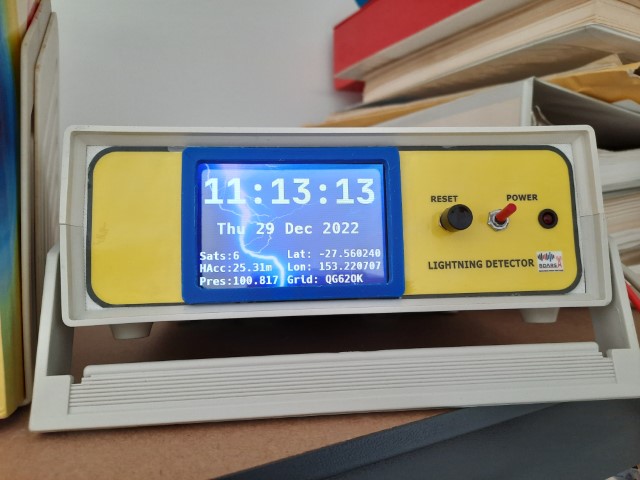The Project
Welcome to the Homebrew Lightning Detection website. This website content is not yet complete, however, the project, which is really an extended experiment, was started in 2019 (despite the website being relatively new).
The project is directly supported by three members of the BDARS Amateur Radio Club, and with the help of others. This is a hobby project by a bunch of enthusiasts.
The initial objective was as an experiment to see if we could make a low cost ‘Homebrewed’ Lightning Detector for under AU$100 that was capable of detecting the location of local lightning groundstrikes to accuracy of better than about 200 metres.
Radio signals travel about 300m in one microsecond, so we needed accuracy better than that.
The basic idea was to encourage the radio club members and other interested people to host one of these low cost detectors. For a little extra cost the system can serve as a GPS locked display clock - so its kindof still useful when there are no storms about!
As mentioned, a project goal was to be only interested in short range lightning position detection - that is within say, about 50Km radius of a cluster of detectors - If there’s a storm around here, we want to know where!
It was realised that if enough low-cost detectors could be locally situated it might be possible to realistically determine local strike locations with some reasonable accuracy. Other systems which rely upon drawing long-distance vectors from each detector, and use more widely spaced stations would inherently be more prone to an increased loss of local accuracy, despite their superior hardware.
There was also a design requirement to use any antenna specification, as it was felt impractical and too costly to impose a standard design on users. We wanted to allow a piece of wire strung around a window-frame, a long wire in the loft, or a 2m vertical repurposed VHF antenna on the roof. Anything that could pick up the lightning transients would do the job.
Technical details about how the system works are being added to the site gradually; check out System Operation
 s
s
The output from the networked system is in the form of Internet data feeds, currently one stream goes to a Grafana chart server which produces real time charts of the detector performance and a real-time strike map.
Another data source the project feeds is ‘Strikebot’. This is a Discord chat bot which injects the real time detected strike locations into a Discord chat stream. We also support MQQT, and several members have integrated the strike detection alert into their home automation system, so a verbal announcement is made when a strike detection has occurred.
Posts
subscribe via RSS